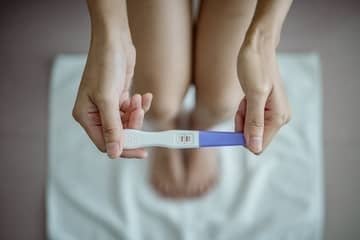
How long does it take to induce labor?
Induction or artificial induction of labor is an act decided by a doctor -obstetrician, and there must always be a valid reason for such a decision. Pregnancy is a process in a woman's life that is controlled by hormones, and childbirth is no different. In some cases, the hormones decide to give birth prematurely, in other cases, the birth does not come even when it was long overdue. The birth phase and its onset are influenced by a number of specific factors. How long does it take to induce labor?
In certain cases of pregnancy, it is also possible to induce labor by natural preinduction, and it is not necessary to proceed immediately to induction of labor, that is, artificial induction of labor. Pre-induction usually occurs when a woman is close to giving birth or, on the contrary, it is a post-term pregnancy. However, it is always up to the doctor's judgment whether he decides that labor must be induced for adequate reasons or that some pre-induction methods can be applied. Preinduction represents a set of certain procedures by which the patient can be prepared for vaginal delivery. We recommend the following pre-induction methods that can be used to induce labor:
- a short bath in warm-hot water with the addition of suitable essential oils,
- physical activity – exercises on a fitness ball, longer walks, walking up the stairs or stretching exercises (cat position),
- perineal massage, breast (nipples), belly stroking,
- sex
- lavender, cinnamon or raspberry leaf tea,
- castor oil,
- Hamilton's touch (performed by a doctor with the consent of a pregnant woman).
The induction of labor is inevitably approached if pre-induction does not work, e.g. in post-term pregnancy, i.e. carrying when the pregnancy lasts more than 42 weeks. By default, a physiological pregnancy is considered to last a maximum of 40 weeks. The induction of labor is usually approached even if there is a premature outflow of amniotic fluid. Another risk is, for example, the position of the fetus transverse or turning the pelvic end downwards. Induction can be considered in high-risk pregnancies, when a woman has gestational diabetes, hypertensive conditions, multiple births, high -risk anamnesis, fetal defects or Rh incompatibility.
Artificially induced labor does not mean that a woman must automatically give birth within an hour. The experiences of mothers also clearly say that while some mothers went into labor after induction within 2 hours, for some it took 2 to 3 days, sometimes even longer. Also based on practice, successful induction is considered to be the case if labor begins within 48 hours. In the event that the induction is repeated, i.e. the initial artificial induction does not take place, surgical termination of the pregnancy is usually approached - section. But not necessarily. There are many opinions regarding the artificial induction of pregnancy. There are conflicting studies, which interpret that artificial induction of labor increases the chance of cesarean delivery, on the other hand, there are verified studies that refute this claim and that induction, on the contrary, reduces the risk of cesarean section.
It is possible to induce labor artificially in a mechanical way - an amniotomy occurs. It is an artificial interruption of the sac of membranes. This disruption can induce labor within 2 hours after its implementation. If contraction activity does not occur even after 2 hours, labor is induced pharmacologically with the help of intravenous administration of oxytocin. Its purpose is to induce contractions of the uterus. In some cases, such induction was not successful and oxytocin had to be re-administered or (in most cases) the delivery was by caesarean section. The negative side of the pharmacological method is the increased pain and intensity of contractions. This is also why forms of analgesia are used during such births.
Pridať komentár






